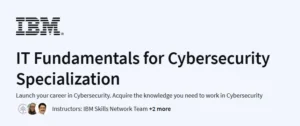What will you learn in Deep Learning with PyTorch Step-by-Step: Part I – Fundamentals Course
Understand the principles of deep learning and why PyTorch is widely used
Manipulate tensors, compute gradients, and leverage automatic differentiation
Build custom neural network architectures using
nn.Moduleandtorchvision
Train, validate, and tune models with optimizers, loss functions, and learning rate schedules
Apply convolutional and recurrent networks for computer vision and sequence tasks
Deploy trained models and follow best practices for reproducibility and performance
Program Overview
Module 1: Introduction to PyTorch & Deep Learning
⏳ 1 week
Topics: Deep learning fundamentals, PyTorch ecosystem, CPU vs. GPU execution
Hands-on: Install PyTorch, run a “Hello, World!” tensor example, and visualize operations
Module 2: Tensors, Autograd & Computation Graphs
⏳ 1 week
Topics: Tensor operations, broadcasting, gradient tracking, computational graphs
Hands-on: Compute gradients for simple functions and implement a manual optimizer
Module 3: Building Neural Networks with nn.Module
⏳ 1 week
Topics: Layers, activations, model definitions, forward/backward methods
Hands-on: Define and train a feedforward network on MNIST classification
Module 4: Training Loop, Loss & Optimization
⏳ 1 week
Topics: Loss functions (CrossEntropy, MSE), optimizers (SGD, Adam), batching, and epochs
Hands-on: Write a full training and validation loop, plot loss and accuracy curves
Module 5: Convolutional Neural Networks & Transfer Learning
⏳ 1 week
Topics: Conv layers, pooling, pretrained models, fine-tuning strategies
Hands-on: Build a CNN for CIFAR-10, then fine-tune ResNet on a custom image dataset
Module 6: Recurrent Networks & Sequence Modeling
⏳ 1 week
Topics: RNN, LSTM, GRU cells, sequence-to-sequence basics, teacher forcing
Hands-on: Implement a character-level language model and generate text samples
Module 7: Model Deployment & Best Practices
⏳ 1 week
Topics: Saving/loading models, TorchScript, ONNX export, reproducibility tips
Hands-on: Export a trained model to TorchScript and run inference in a standalone script
Module 8: Capstone Project – End-to-End Deep Learning
⏳ 1 week
Topics: Project scoping, data pipelines, evaluation metrics, presentation
Hands-on: Tackle a real-world problem—e.g., image segmentation or sentiment analysis—and present results
Get certificate
Job Outlook
Deep learning with PyTorch is in high demand for roles like ML Engineer, Research Scientist, and AI Developer
Industries include healthcare imaging, autonomous vehicles, NLP-driven services, and recommendation systems
Salaries for entry-level positions start around $90,000, rising to $150,000+ for experienced practitioners
Mastery of PyTorch fundamentals opens paths to advanced research and specialized AI roles
Specification: Deep Learning with PyTorch Step-by-Step: Part I – Fundamentals
|
FAQs
- Basic Python programming is recommended, but ML experience is optional.
- Understanding linear algebra and statistics can make learning faster.
- The course explains fundamental deep learning concepts from scratch.
- Prior experience with NumPy or Pandas can help with data handling.
- Motivated beginners can still follow along using the course examples.
- The course focuses on foundational concepts of neural networks.
- You will build simple networks to understand how layers, activations, and losses work.
- Complex, production-ready networks may be covered in advanced courses.
- Hands-on coding exercises help bridge theory and practical implementation.
- The skills gained are directly applicable to experimenting with real datasets.
- The course focuses exclusively on PyTorch for deep learning.
- PyTorch is beginner-friendly and widely used in research and industry.
- Core concepts like tensors, autograd, and model training are transferable.
- Once comfortable with PyTorch, transitioning to TensorFlow is easier.
- The course emphasizes understanding concepts rather than framework comparison.
- It builds a solid foundation for AI, ML, and data science roles.
- Understanding neural network fundamentals is essential for advanced AI work.
- Skills gained help in implementing models and debugging networks.
- It provides confidence to take advanced courses in deep learning.
- Practical coding exercises enhance employability for entry-level positions.
- Basic linear algebra (vectors, matrices) is helpful but not mandatory.
- The course explains necessary mathematical concepts alongside coding.
- Understanding derivatives and gradients can enhance learning of backpropagation.
- No advanced topics like differential equations are required.
- Focus is on practical implementation and conceptual understanding.





